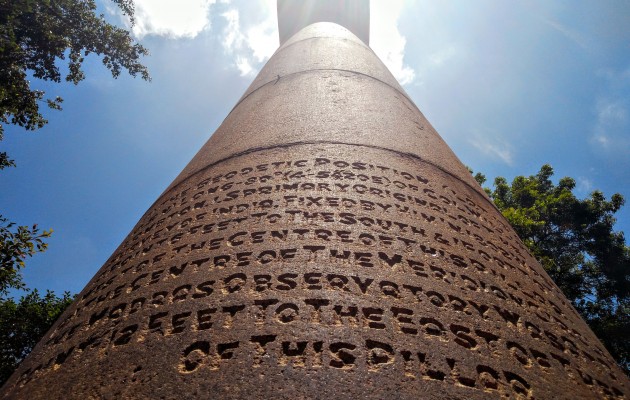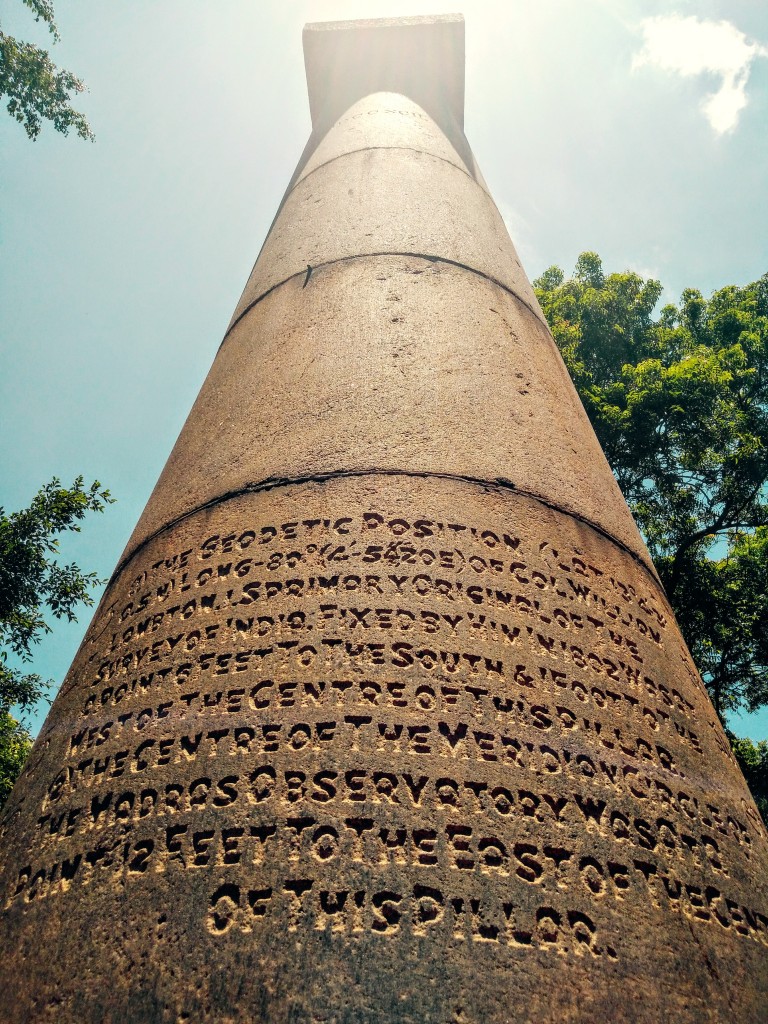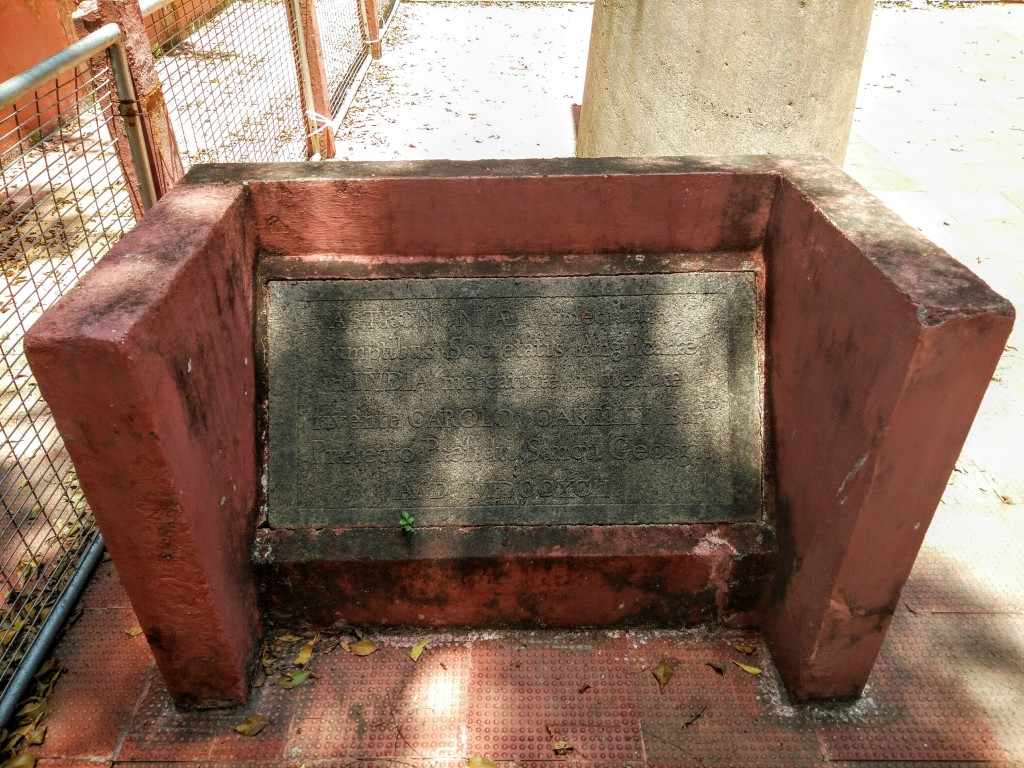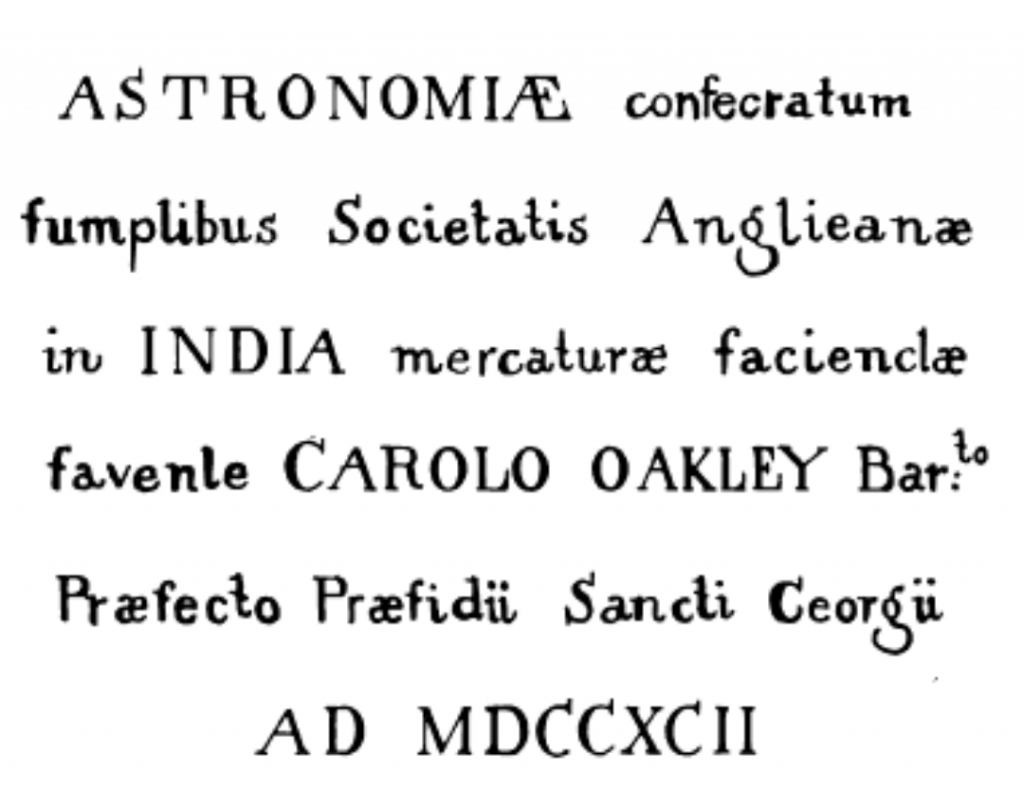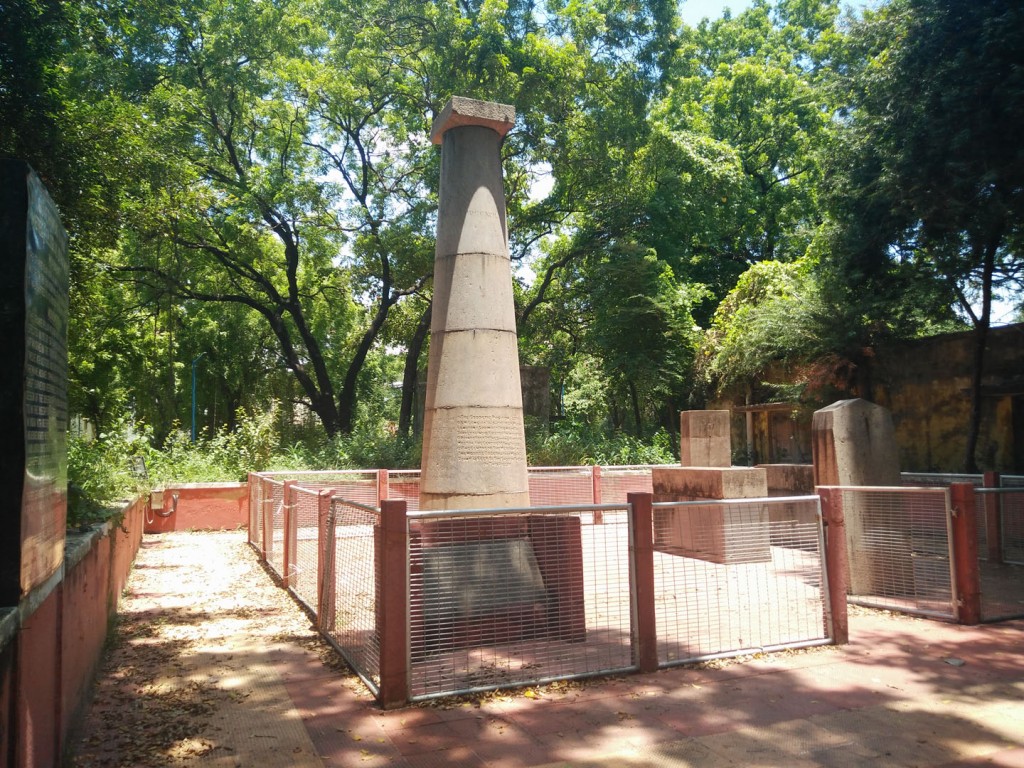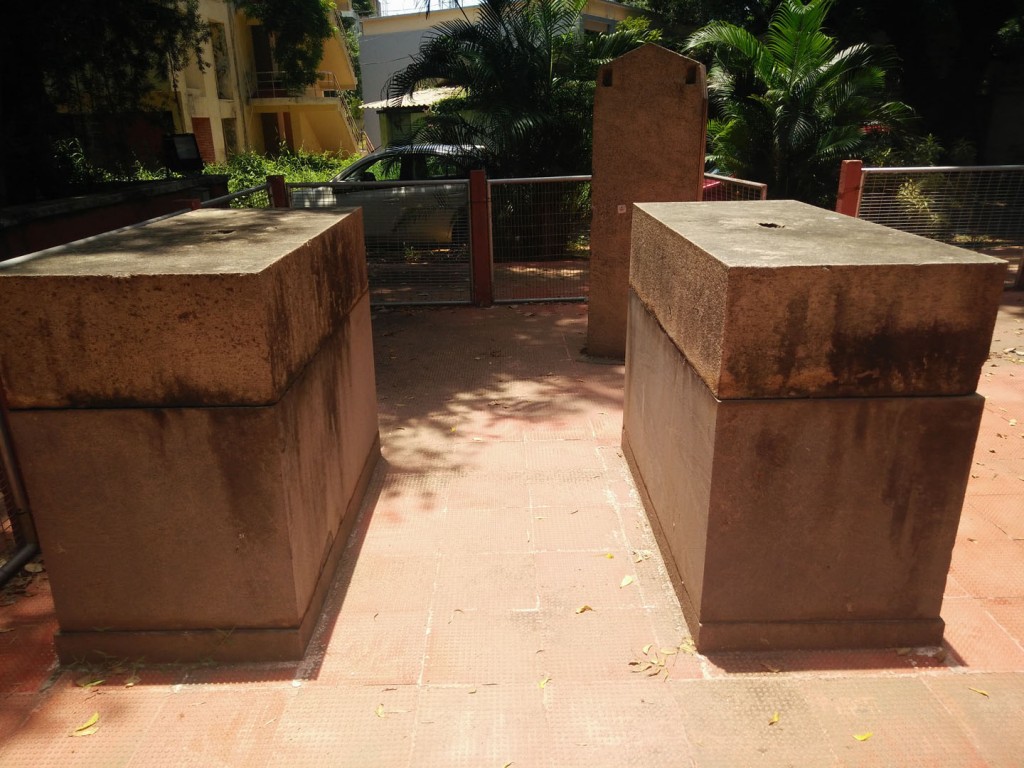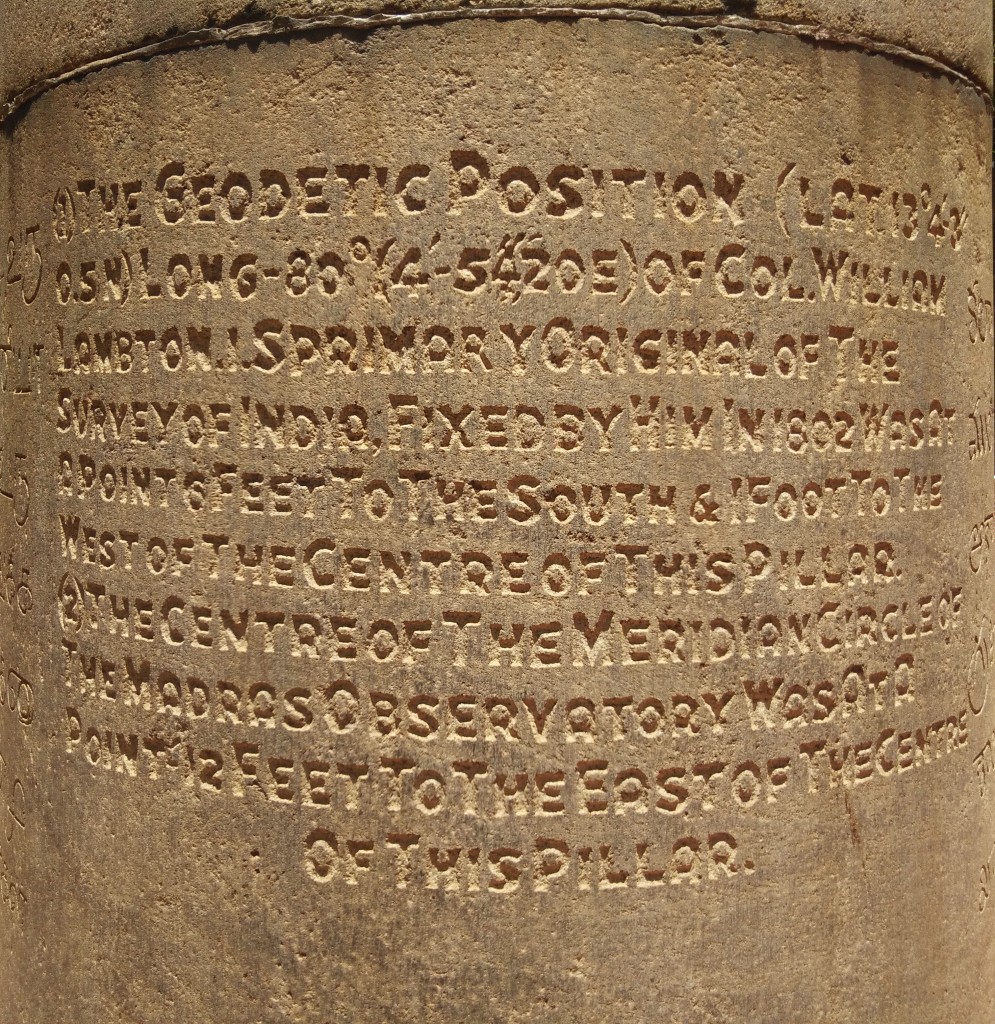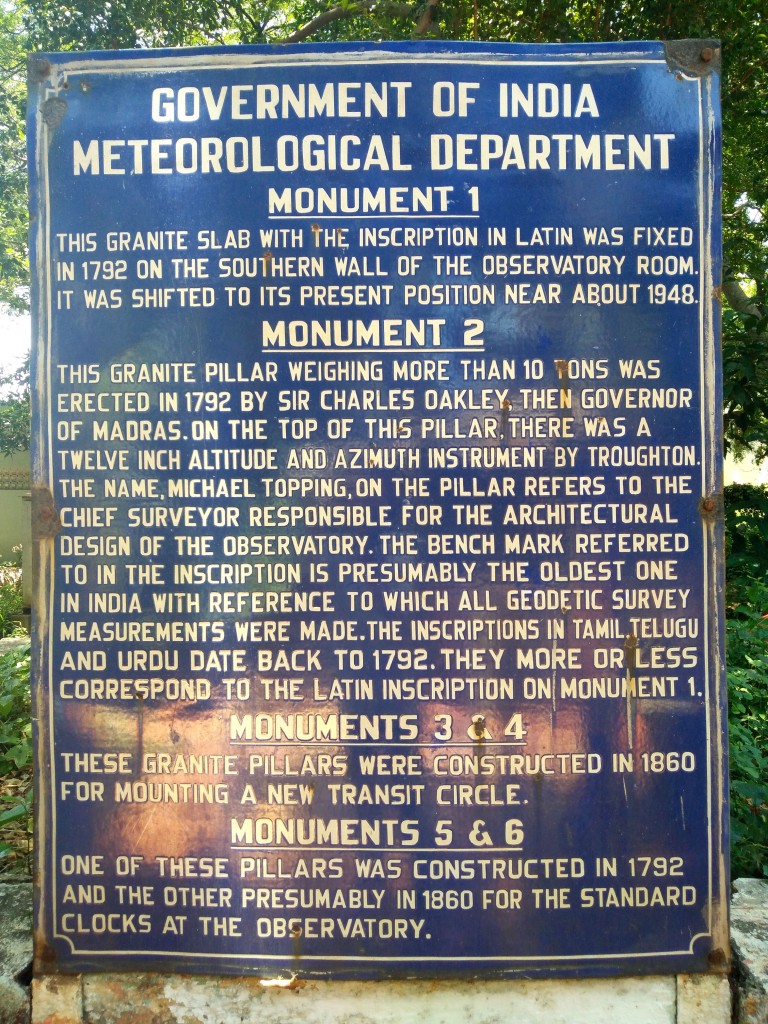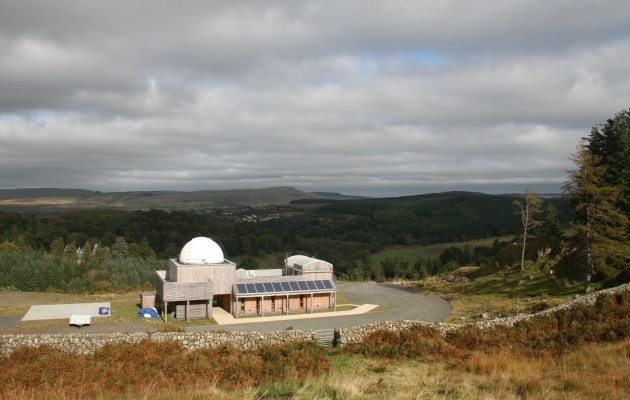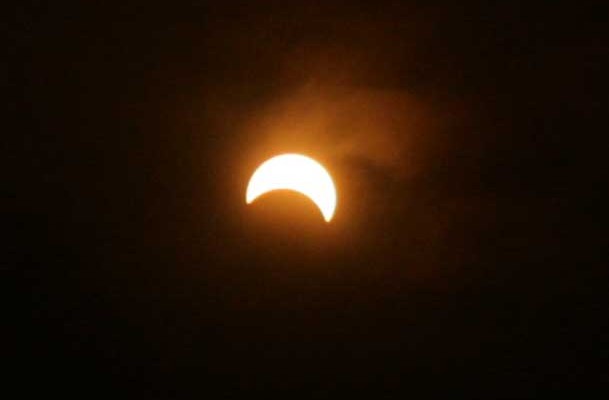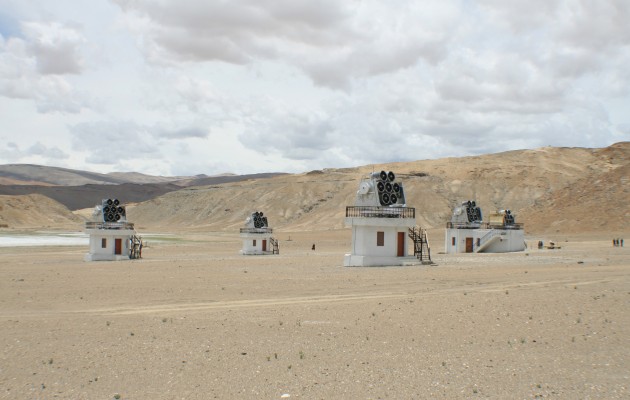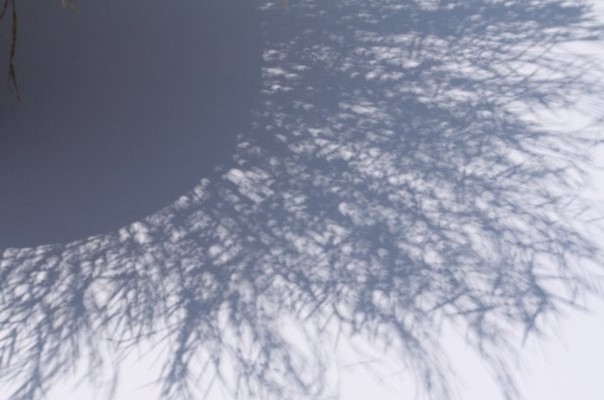Old Madras Observatory: Field notes 1
- posted in astronomy, expedition
- / with 0 comments
This 10 ton, 15-foot long granite pillar, erected in 1792, is one of the few remains of India’s first modern public observatory, the Madras Observatory, started by the British East India Company in 1786. For over a century it was the only astronomical observatory in India that exclusively worked on the stars. Among the astronomers at the observatory were Norman Robert Pogson, Michael Topping and John Goldingham. By 1899, it had been relegated to gathering weather-related data. It now is within the grounds of the Regional Meteorological Centre, Chennai. More details can be found at http://adsabs.harvard.edu/full/1988JBAA…98..189S
The pillar, which carried the original transit equipment has the name of the architect, Michael Topping and the year A.D.MDCCXCII inscribed on it. The inscription that follows below is also carved in Tamil and Telugu.
(I) The Geodetic position (Lat 13 4′-3″O.5 N) Long-80(4′-54″20 E) of. Col. Willaim Lambton is primary original of the survey of India, fixed by him in 1802, was at a point 6 feet to the South & 1 foot to the West of the centre of this pillar.
(2) The centre of the Meridian Circle of the Madras Observatory was at a point-12 feet to the East of the centre of this pillar.)
In the year 1855 – Capt. W.S. Jacob of the East India Observatory in Madras, India, found orbital anomalies in the binary star 70 Ophiuchi that he claimed were evidence of an extrasolar planet – the first exoplanet false alarm. The “discovery” began a 140-year period of other exoplanet discovery false alarms, but no actual exoplanets, orbiting any star, were discovered and confirmed until 1992.
“It is the observatory where T.G. Taylor make a catalogue of stars popularly known as the ‘Madras Catalogue’, which Sir George Airy, the then Astronomer Royal, considered ‘the greatest catalogue of modern times’. Here the eminent astronomer N.R. Pogson also discovered several minor planets and variable stars and conducted observations for his world famous Variable Star Atlas.”
Dilip M. Salwi, Madras Observatory: A forgotten page in Astronomy
The pillar that carried the original small transit instrument on a massive granite pillar has on it an inscription in Latin, Tamil, Telugu and Hindustani,
“Posterity may be informed a thousand years hence of the period when the mathematical sciences were first planted by British liberality in Asia.”
